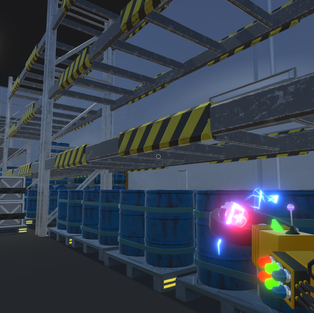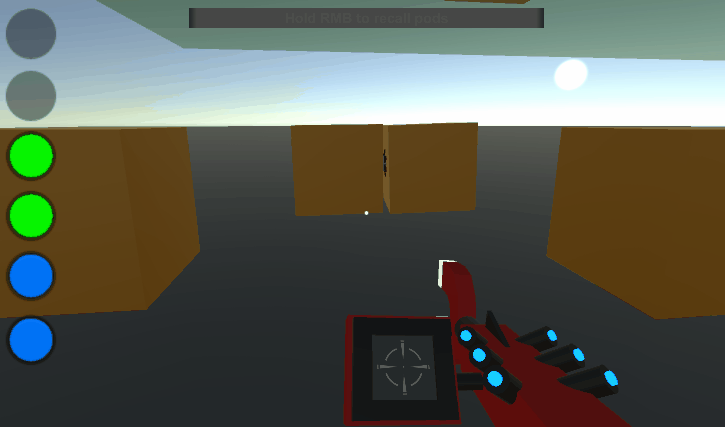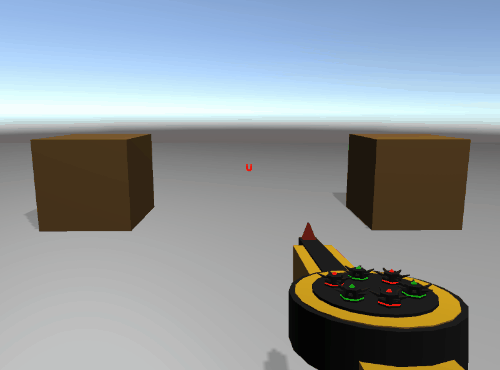Eleanor Erceg - Game Designer Portfolio


Team: Eleanor Erceg - Lead Designer, Jason Trounson - Programmer/Designer, Andrew Gunn - Artist, Brandon Reynolds - Artist, Najee Helwe - Artist
Tools: Unity, Perforce, Google Drive, Diagrams.net, Trello
My Tasks: Mechanics Design, Level Layouts/Design, Greyboxing, Puzzle Design, Narrative Design, Scheduling, Testing
Magne-tech is a first person magnet based puzzle game similar to games like portal, featuring one core mechanic that sees the player navigating themselves through a series of rooms of escalating complexity.
Proof of Concept
This project was chosen out of a series of design pitches, the original concept was pitched by designer Jason Trounson. From there a team was formed to further develop the concept and construct a demo showing the feasibility of the product and our ability to produce it. As we didn't have a dedicated programmer Jason was assigned that role, due to him having more experience in that field, leaving me to take on the lead design role.
Concept Iteration
-
Evaluate proposed mechanics
-
Streamline design
The initial design was more complicated, aiming for more realistic magnet functionality with persistent effects to all magnetic objects in range. However, during the prototyping phase it was decided to scale things back and simplify the mechanics, taking inspiration from the magnet gun in Red Faction Armageddon where pods are linked directly to other pods. This choice was made to make programming and designing easier and more focused, as both programming and puzzle design specifically were outside of our respective strengths.
Prototyping Process
-
Propose potential interaction
-
Test programing feasibility
-
Design expanded puzzle
My design process for the proof of concept demo consisted of creating a series of isolated puzzle design pitches featuring one mode of interaction. These interactions were then tested by the programmer, adjusting the code where applicable to accommodate them. When a puzzle element was signed off as workable it could be incorporated into the design of the main demo scene.
The final demo, serving as the prototype for the complete game is available to play on itch.io.
Major Production
Having solidified the core design and established mechanics in the previous class, the bulk of the design work for this development was put into expanded puzzle and level design. The new design process for this stage was to concept the general layout of the levels to fit into the world design and logically construct a puzzle in that space.
Narrative Context
-
Finalise narrative design
-
Lay out levels to fit context
-
Logically extrapolate puzzles
The narrative and setting went through many iterations in early concepting, eventually deciding on an industrial sci-fi aesthetic with a robot protagonist attempting to escape an abandoned facility after gaining sentience. Now into major production I was to also further development on the narrative context for the game, storyboarding intro and outro cutscenes, establishing a theme and worldbuilding. The facility is an abandoned weapons manufacturing plant still operating on automation as it is gradually falling apart, long after the humans have been wiped out do to war.
In addition to the basic puzzle elements trialed in the previous build, a few new mechanics were introduced that were cut in the last concepting phase for time. With more time available, and having more confidence in the programming and design now, these were more easily built onto the foundation established.
Feedback
-
Public itch.io build
-
Evaluate common problems
-
Determine viable solutions
-
Implement changes
As part of the testing process the original prototype demo was posted on itch.io linked with a questionnaire with space for general feedback. It was noted that most players found the puzzles too hard, targeting pods tedious and mechanics occasionally confusing. Based on feedback a simple tutorial area was put together to teach each mechanic in isolation, a new radial HUD menu was implemented to make targeting simpler and more consideration for the logic and hints to puzzles given.
The project beta and final build, with all mechanics set and full game designed and laid out, are available on itch.io.
















